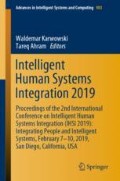Abstract
With the continuous development of information and communication technology, smart cities have become the dominant slogan for building cities. Smart cities are new plans created to solve common problems in cities. The current perspective focuses on the integration of smart cities and technologies, and believes that smart cities are a combination of digital and technology, information and communication, ignoring the function of cities. The aesthetics of “White Bi” theory focusing on function and essence is precisely the guiding ideology missing in the construction of contemporary smart cities. This article takes the ancient Chinese “White Bi” philosophy as the starting point and guides the development concept of the smart city, so that the smart city construction pays attention to the essence of the city and restores the city function. In view of the construction of the current smart city, an effective design theory reference is proposed. Let the smart city form a new model of “integral”, “intelligent”, “harmonious” and “functional” in the future.
Access this chapter
Tax calculation will be finalised at checkout
Purchases are for personal use only
References
Xi, G., Zhen, F.: The spatial organization and planning of smart cities based on the sustainable development goals. J. Urban Develop. Stud. 102–105 (2014)
Anan Y.: The Multi-dimensional enlightenment of Zhou Yi’s concept of aesthetics. J. Soc. Sci. Yunnan, 171–174 (2014). (in Chinese)
Guo, M., Liu, Y., Yu, H., Hu, B., Sang, Z.: An overview of smart city in China. J. China Commun. 203–211 (2016)
Xu, Z., Liu Y.: Research on the development of smart city based on the thought of “urban brain”. J. Reg. Econ. Rev. (2018)
Huang, L.: On the aesthetic value of divinatory symbols of Bi in the book of changes. J. Jishou Univ. 55–56 (2006). (Social Sciences Edition)
Author information
Authors and Affiliations
Corresponding author
Editor information
Editors and Affiliations
Rights and permissions
Copyright information
© 2019 Springer Nature Switzerland AG
About this paper
Cite this paper
Wu, X., Yang, M., Zhang, X. (2019). Design of Smart City Evaluation Based on the Theory of “White Bi”. In: Karwowski, W., Ahram, T. (eds) Intelligent Human Systems Integration 2019. IHSI 2019. Advances in Intelligent Systems and Computing, vol 903. Springer, Cham. https://doi.org/10.1007/978-3-030-11051-2_55
Download citation
DOI: https://doi.org/10.1007/978-3-030-11051-2_55
Published:
Publisher Name: Springer, Cham
Print ISBN: 978-3-030-11050-5
Online ISBN: 978-3-030-11051-2
eBook Packages: Intelligent Technologies and RoboticsIntelligent Technologies and Robotics (R0)

